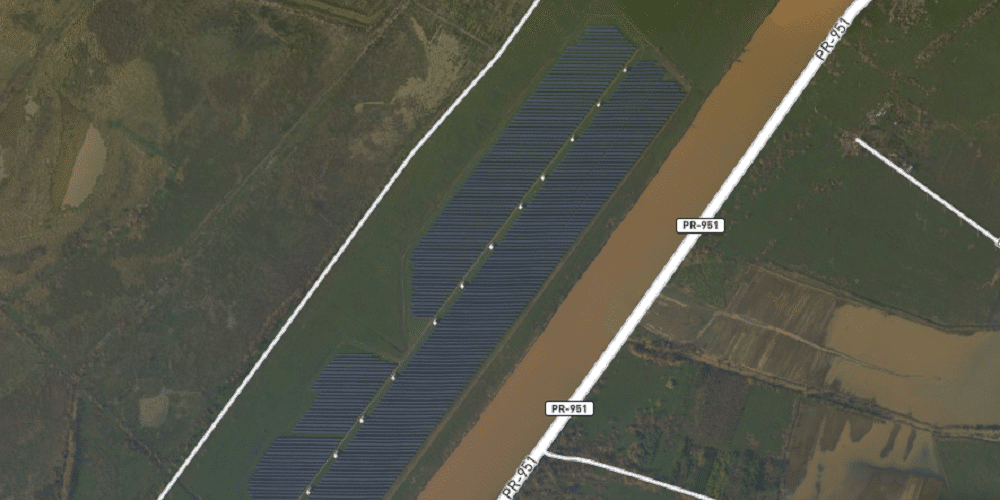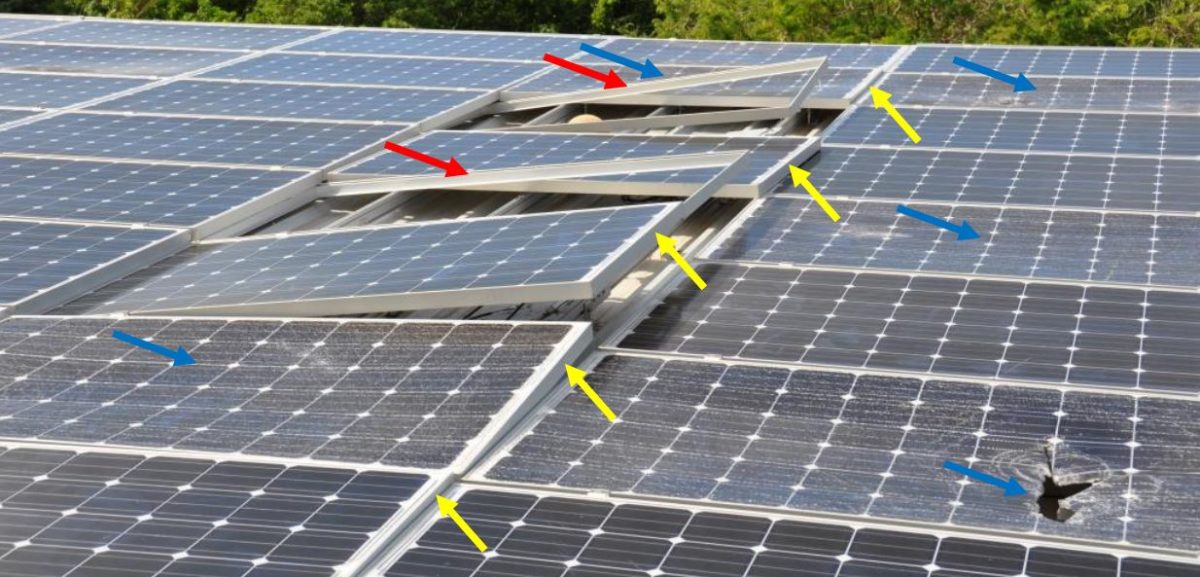First issued in April 2018 and revised in August, the Federal Emergency Management Agency’s (FEMA) Rooftop Solar Panel Attachment: Design, Installation, and Maintenance (.pdf) provides code guidance and recommends best practices for design, installation and maintenance of rooftop solar panels. The document was driven by information collected after Hurricanes Irma and Maria in 2017, and its focus is on architects, engineers, and contractors – as well as active owners.

The document reiterated industry standards as being the best ways to protect your system: first by getting the system fully examined by a structural engineer, then by making sure your contractor’s installation is competent and finally by completing the ongoing maintenance of checking the tightness of the array’s bolts with a torque wrench.
This specific task, checking the array’s bolts with a torque wrench, was the most suggested action for storm preparedness.

Multiple types of damage were noted, mostly shown were different ways that panels disconnected from racking systems. Also referenced often was flying debris damage – and it was noted that none of the major code bodies had wind-borne debris requirements.
It was suggested that in hurricane prone regions, designers ought specify solar panels that have a damage rating of “VSH” (very severe hail).
The document lists and describes nine sets of codes, standards, and guidelines regarding rooftop solar power installations.
FERC also recommended that installations consider microinverters versus string or central inverters. It was noted that many systems only lost a minimal number of solar panels, and that systems with microinverters have a greater chance of allowing undamaged panels in a PV array to continue to generate electricity even if one panel is blown away or damaged by wind-borne debris. Having a connection that can run when the grid is down was also recommended, and, while it wasn’t noted, it is probable that having batteries or technology like Enphase’s upcoming IQ8 would also increase resiliency.

The Rocky Mountain Institute also covered this topic, and noted that there were some similarities between failed systems – including module clamp failures, undersized racks, undersized and under-torqued bolts, a lack of bolt locking solutions, and a lack of lateral racking support. Their engineers also observed that surviving systems had the modules through-bolted (no clamps), and featured bolts with locking solutions and lateral racking supports.
RMI suggests building systems that can survive high speed wind aren’t expensive, and that a:
1 MW ground mount project on suitable soil and flat terrain in the Eastern Caribbean would incur an increase of approximately 5 percent in engineering, procurement, and construction (EPC) costs when these best practices are implemented versus the standard category IV rated installation.

The above image is the 27 MW San Fermin solar plant in Puerto Rico four days after Hurricane Maria swept the island. The image came from the NOAA by way of earther.com. The system was designed back in 2012 to withstand up to 250-260kph (155-162mph) wind speeds, and sustained near those speeds with little damage.
This article was updated in June 2021 to replace a broken link.
This content is protected by copyright and may not be reused. If you want to cooperate with us and would like to reuse some of our content, please contact: editors@pv-magazine.com.








I believe this is one of the main issues in hurricane prone areas like Florida for example. Can an expensive solar system be installed to withstand hurricane force winds in excess of 140 mph. There has to be standards set up in coastal states that won’t make solar investments prone to destruction in the event of a major hurricane. Confidence in those standards will increase sales and implementation.
Terrific article! I’ve been wondering about the survival of solar panels in hurricanes…..thank you.